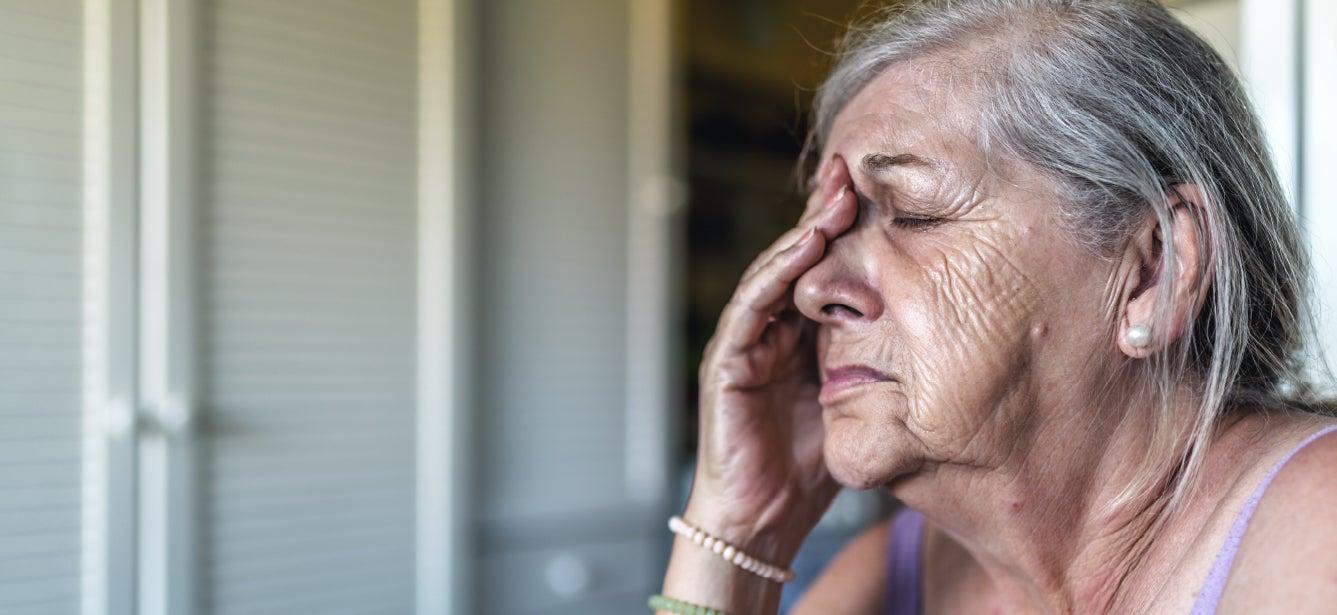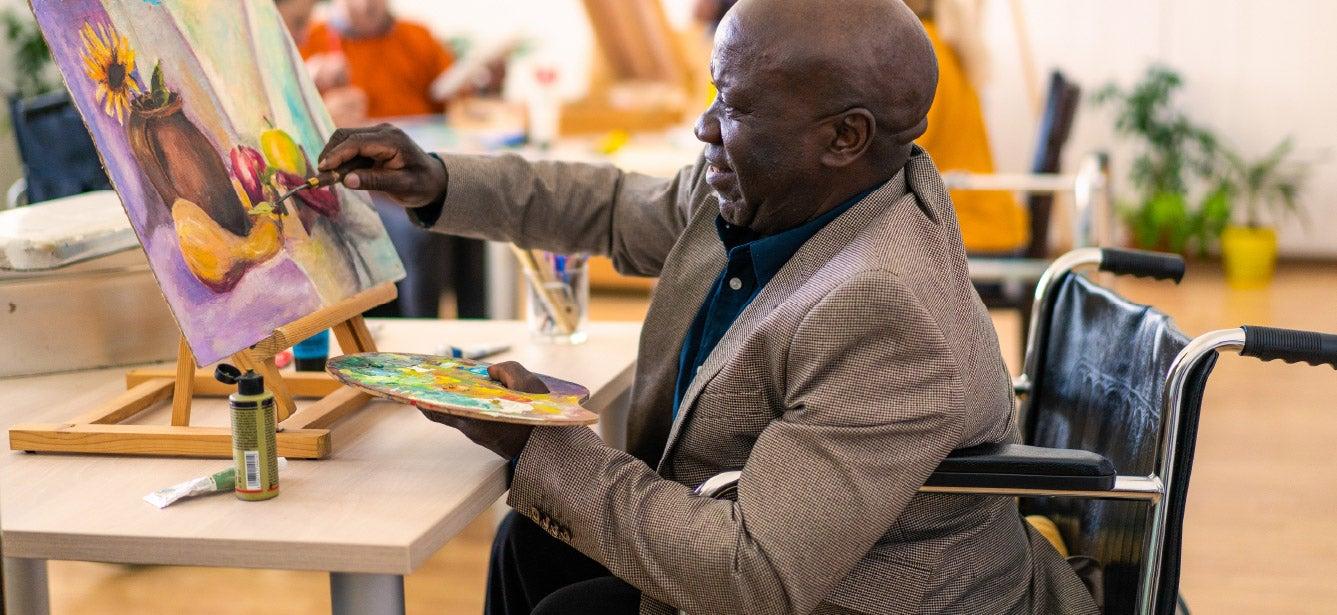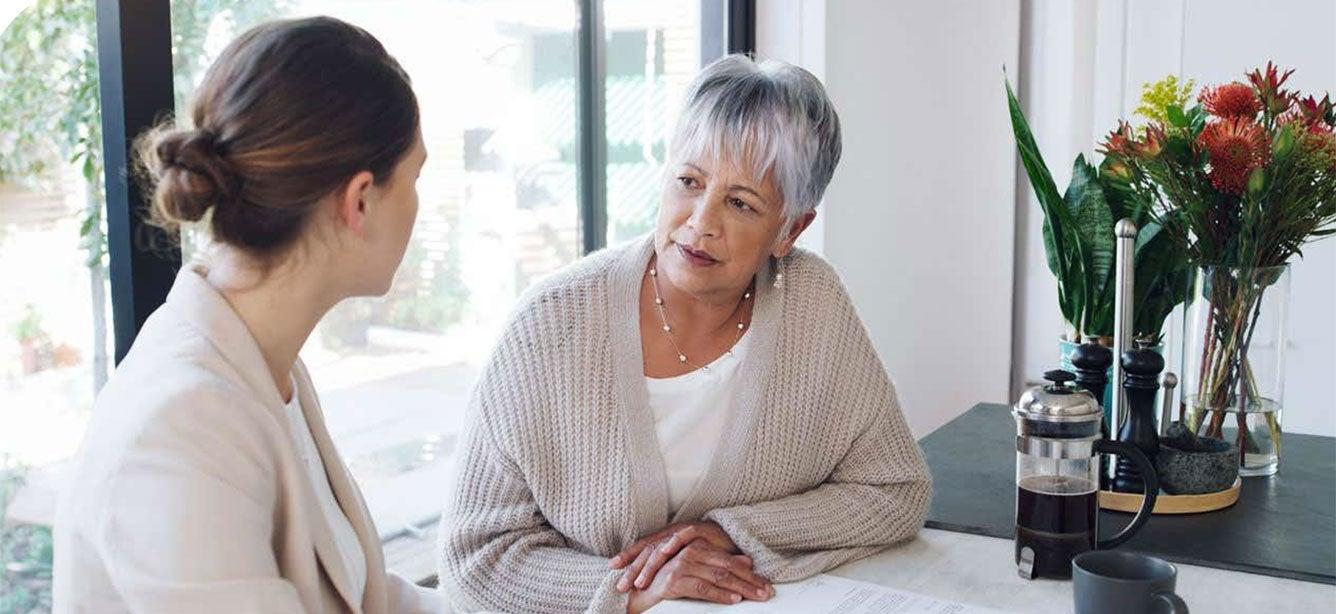
Related Topics
By 2034, 1 in every 5 residents of the United States will be older than 65, and there will be more people who are over 65 than under 18.1 As the demographics of the U.S. continue to change rapidly over the next decade, with more older adults than ever before, the prevalence of mental health issues, including suicide, are expected to increase.2
There is an urgent need to explore the complexity of late life suicide. According to the Centers for Disease Control and Prevention (CDC), suicide rates are highest among adults age 75 and older (19.1 per 100,000), and highest among males age 75 and older (40.5 per 100,000).3 Older adults also have greater frailty and are more likely to use lethal means than their younger counterparts.4
Why is suicide common among older adults?
When discussing suicide, often the question “why?” enters the conversation. Why do some older adults have thoughts of suicide?
The Interpersonal Theory of Suicide (IPTS) may help answer this question. The IPTS describes three conditions that, when occurring simultaneously, may result in suicide or a near-fatal attempt:
- Thwarted belongingness: feeling like one does not belong; experiencing chronic loneliness and the lack of reciprocally caring relationships
- Perceived burdensomeness: the perception, not the reality, that one is a burden and others would be better off without them
- Acquired capability to enact lethal self-harm: fearlessness about dying and pain tolerance
Thwarted belongingness and perceived burdensomeness together create desire for suicide, which can develop quickly. An older adult experiencing thwarted belongingness and perceived burdensomeness may not actively be at risk of dying by suicide, but they do have a desire for death. Acquired capability is argued to develop over time due to repeated exposure to painful experiences (such as living with chronic pain for an extended period).5 When a person has both suicide desire and capability, suicide attempts or death by suicide are likely.
How do we know if an older adult is at risk of suicide?
Unfortunately, suicide among older adults can often go unrecognized by helpers and care providers. Researchers have found many older adults who die by suicide saw their primary care physician within a month of their death.6 Older adults who may be at risk of suicide7 may also experience the following:
- Social isolation and loneliness (e.g., living alone, being a widow/widower, low social support)
- Physical and mental health problems
- Chronic pain
- Stressful life events (e.g., financial discord, death/divorce)
- Need for home-based care, loss of functioning with activities of daily living (ADL)
While it is imperative to know the risk factors of older adults who could be suicidal, as well as warning signs of suicide, the only way to know for sure if an older adult is at risk of suicide is to ask that person directly if they are thinking about suicide. Asking directly about suicide will not create or worsen suicidal thoughts.
How can we help an older adult who's at risk of suicide?
There are many ways to help an older adult who may be at risk of suicide:
- If the person is in immediate danger, call emergency services (911).
- Provide support by listening after asking about suicide—talk about the things in their life that are contributing to their suicidal thoughts. These guidelines developed to enhance meaningful conversations with older adults during COVID-19 provide some tips on how to build and strengthen connections with older adults.
- Share the National Suicide Prevention Lifeline Number (1-800-273-8255) as a 24/7 source of professional support and create a plan for staying safe.
- Invest in suicide intervention skills training—learn the skills to provide an intervention in the moment when help is needed most. Ongoing research funded by the Administration for Community Living is exploring the effectiveness of a particular suicide intervention training among older adults in the Aging Services Network who may be at risk, with the goal of establishing empirical evidence to include this training in the NCOA Evidence-Based Registry.
Ways to prevent suicide among older adults
We can also look to suicide research to see how strategies, such as a warm phone call, could impact the lives of lonely older adults who may be at risk of suicide. Among older adult participants receiving home-delivered meals, researchers found those with no real-time connections during the week (such as a phone call, in-person visit, or video call) were the loneliest, had the least amount of social support, felt most like they were a burden, and felt most like they did not belong.8
Creating strategies to connect with older adults (especially for providers in the aging services network, such as nutrition service volunteers) may be a way to reach individuals who are at greater risk of suicide and to promote their lives. Research has found when nutrition service volunteers receive suicide intervention training, they not only obtain suicide intervention skills—they also report using them with older adult clients at risk of suicide, as well as in interactions in their daily lives.9
Why we need to close the gap in older adult mental health care
Providing mental health support and care to older adults who may be struggling with suicidal thoughts is crucial—however, there are barriers to care that must be eliminated to support the existing and growing need of mental health care for older adults.
Medicare is the primary insurance provider for over 60 million older adults and individuals with disabilities,11 and this number is projected to grow to 80 million by 2030.12 Medicare covers mental health care for older adults, but licensed mental health counselors (LMHCs) and licensed marriage and family therapists (LMFTs), professionals who make up a significant proportion of the mental health workforce, are not currently recognized as providers by Medicare; the Medicare provider list has not been updated in over 31 years.13
Because LMHCs/LMFTs comprise a significant amount of the mental health workforce, particularly in rural areas, Medicare beneficiaries may struggle to locate mental health services, resulting in the burden of traveling long distances to receive care or having to forgo needed care completely. In certain cases, this leads to undiagnosed and untreated mental health conditions or hospitalization. The Biden Administration recently proposed modernizing Medicare’s approach to mental health through the addition of LMHCs/LMFTs to the Medicare program as part of its fiscal year 2023 budget, but lawmakers have not yet passed these revisions (Senate Bill 828/House Bill 432) into law.
Through awareness, education, training, and advocacy, we can create a safer world for older adults who may be at risk of suicide.
NCOA hosts the annual Older Adult Mental Health Awareness Day to highlight critical issues in addressing mental health needs as we age.
This article is supported by the Administration for Community Living (ACL), U.S. Department of Health and Human Services (HHS) as part of a financial assistance award totaling $5 million with 100% funding by ACL/HHS. The contents are those of the author(s) and do not necessarily represent the official views of, nor an endorsement, by ACL/HHS, or the U.S. Government.
Sources
1. Older People Projected to Outnumber Children for First Time in U.S. History. U.S. Census Bureau. March 2018. Found on the internet at https://www.census.gov/newsroom/press-releases/2018/cb18-41-population-projections.html
2. Growing Mental and Behavioral Health Concerns Facing Older Americans. American Pyschological Association. Found on the internet at https://www.apa.org/advocacy/health/older-americans-mental-behavioral-health
3. WISQARS (Web-Based Injury Statistics Query and Reporting System) Reporting Data. Centers for Disease Control and Prevention. Found on the internet at https://www.cdc.gov/injury/wisqars/index.html
4. Yeates Conwell, Kimberly Van Orden, Eric D. Caine, Suicide in Older Adults, Psychiatric Clinics of North America, Volume 34, Issue 2, 2011, Pages 451-468,ISSN 0193-953X. Found on the internet at https://doi.org/10.1016/j.psc.2011.02.002
5. Conejero I, Olié E, Courtet P, Calati R. Suicide in older adults: current perspectives. Clin Interv Aging. 2018;13:691-699. Published 2018 Apr 20. doi:10.2147/CIA.S130670. Found on the internet at https://www.ncbi.nlm.nih.gov/pmc/articles/PMC5916258/
6. Stene-Larsen K, Reneflot A. Contact with primary and mental health care prior to suicide: A systematic review of the literature from 2000 to 2017. Scand J Public Health. 2019 Feb;47(1):9-17. doi: 10.1177/1403494817746274. Epub 2017 Dec 5. PMID: 29207932. Found on the internet at https://pubmed.ncbi.nlm.nih.gov/29207932/
7. Conwell Y, Duberstein PR, Hirsch JK, Conner KR, Eberly S, Caine ED. Health status and suicide in the second half of life. Int J Geriatr Psychiatry. 2010;25(4):371-379. doi:10.1002/gps.2348. Found on the internet at https://www.ncbi.nlm.nih.gov/pmc/articles/PMC2864785/
8. Mize, Mary Chase Breedlove. Optimizing the Aging Services Network to Identify and Respond to Older Adults at Risk of Suicide. Counseling and Pyschological Services Dissertations. Georgia State University. Found on the internet at https://scholarworks.gsu.edu/cps_diss/151/
9. Mize, Mary Chase Breedlove. Suicide intervention among aging network providers. Educational Gerontology. Published online Feb. 7, 2022. Found on the internet at https://www.tandfonline.com/doi/full/10.1080/03601277.2022.2034105
11. An Overview of Medicare. Kaiser Family Foundation. Feb. 13, 2019. Found on the internet at https://www.kff.org/medicare/issue-brief/an-overview-of-medicare/
12. CMS announces new streamlined user experience for Medicare benefiairies. Centers for Medicare & Medicaid Services. Oct. 1, 2018. Found on the internet at https://www.cms.gov/newsroom/press-releases/cms-announces-new-streamlined-user-experience-medicare-beneficiaries
13. Omnibus Budget Reconciliation Act of 1989. HR 3299. Found on the internet at https://www.congress.gov/bill/101st-congress/house-bill/3299#:~:text=H.R.,Congress.gov%20%7C%20Library%20of%20Congress



